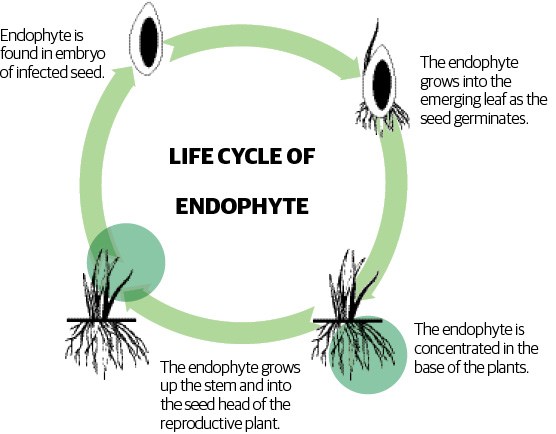Cultural control
The use of different management techniques can reduce the impact some insects have on pasture production. Your local agri manager or agronomist will be able to identify the damaging insect present and advise control options.
There are two main rivals for your grass production: insects and weeds.
You also have two main remedies for reducing their impact – our agrochemical treatments and our leading-edge forage and endophyte technologies.
Insects
Endophytes are natures ‘in-built’ defence mechanisms, providing increased plant tolerance against some insects. Endophytes are fungi that live inside the plant and in return for the shelter and a food source, they release alkaloids that affect insects.
Always identify your targets
The range of insects affecting your pasture will determine the endophyte options you choose. Under certain conditions, some endophytes can have negative side effects on animal health.
Insects may also be a reason for pasture renewal, therefore identifying the damaging insects will affect the control methods used. Soil dwelling insects such as grass grub, black beetle larvae and porina will require different control methods to above-ground insects such as argentine stem weevil and slugs.
Weeds
Identifying your problem weeds allows you to control weeds that may cause issues after sowing. Docks, buttercups, thistles, yarrow, ragwort and sheep sorrel are examples of some weeds that aren’t fully controlled with just glyphosate. Using companion herbicides will allow more effective weed control (see below).
Weed and pest issues must be correctly identified. Any underlying causes need to be recognised and appropriate measures are taken to ensure there are no negative effects on the establishment and performance of the newly sown crop or pasture.

Endophyte – help plants defend themselves
Endophytes have been developed to reduce the potential impact insects have on pasture plants. There are a number of factors to consider when determining the correct endophyte for your situation.
Endophytes take at least 6-8 weeks to fully establish in newly sown seedlings, so it is important to use other control options to prevent damage to grasses during early establishment. Once grasses are well established with multiple tillers, then you can rely on protection from the endophyte.

Strategic chemical intervention
The use of insecticides in the spray-out and seed treatment are valuable steps in reducing the potential of insect damage. Following drilling, monitor paddocks closely because insects can migrate from surrounding areas to newly sown areas and cause damage.
Seed treatment is very effective with moderate insect levels, however, in high insect populations, there is still a risk of some pasture damage because insects have to feed on the crop to ingest the chemical. This means with high insect numbers there will still be enough ‘bites’ to cause damage. In high insect areas, the use of further chemical control may be required.

Forage crops

